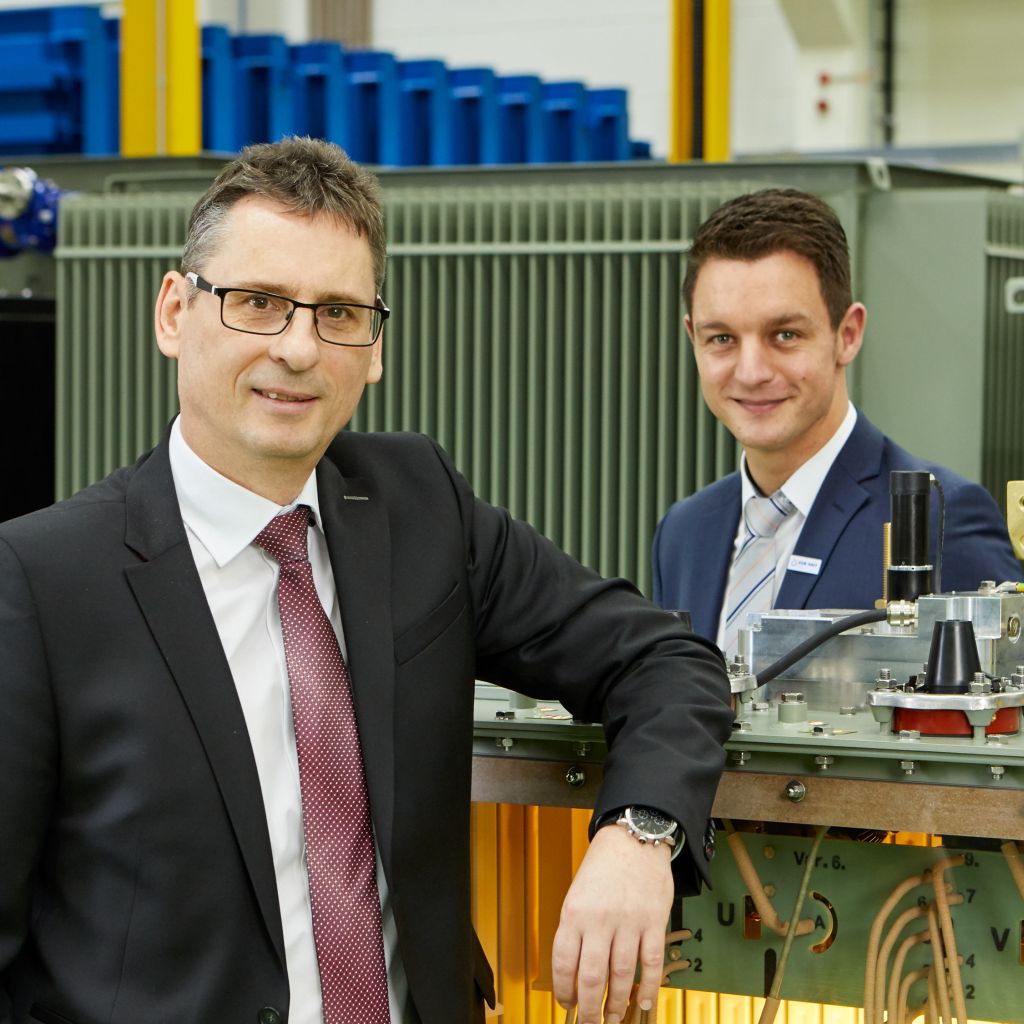Sächsisch-Bayerische Starkstrom-Gerätebau GmbH (SBG) is a leading manufacturer of distribution transformers and special equipment. SBG was one of the first companies that decided to integrate the new ECOTAP VPD on-load tap-changer into its regulated distribution transformers. Managing Director Erwin Birbacher and Sales Engineer Michael Bühnert report on their experiences.
In order to manufacture a regulated distribution transformer, you have chosen to use on-load tap-changers from Reinhausen. Why?
BIRBACHER: For us, it was clear from the outset that we wanted to work with a strong partner, agree on the interfaces and develop a product that was reliable, safe to operate, and above all, could be launched on the market quickly. Both of our companies have an excellent reputation and stand for many years of experience, quality, and longevity. If we say that we combine SBG expertise with Reinhausen tap-changer technology, we don’t have to advertise much more than that.
BÜHNERT: One major advantage is that we offer a plug & play solution that is interesting for all users who want to improve their network quality. In addition to supply network operators, this also applies to industrial companies that have increased demands in relation to a stable voltage band in the network due to sensitive processes.
What sets the VRDT with ECOTAP VPD apart?
BÜHNERT:A key advantage is the ability to integrate the VRDT into existing infrastructures. The VRDT footprint, i.e., the floor space that it occupies, is nearly identical to that of its unregulated counterpart. In addition, it can switch under load and complete tap changes under all conditions. And we can cover the entire voltage band with a control bandwidth of plus/minus ten percent. For example, the VRDT can be used as a direct regulator in the low-voltage network, or as a support to stabilize the medium-voltage network. In addition, the tap-changer does not cause any additional losses. This is not only important in terms of efficiency, but also in terms of heat development.
Was it a complicated development process to get the VRDT ready for series production?
BIRBACHER: We are generally very quick at designing a functional model. Ultimately, we were dealing with a transformer with additional taps, which we then optimized over the course of many development steps. It was therefore possible to test various winding and reactor designs. As a result of developing our own reactors and thanks to their installation position, we were able to halve the additional losses in bridge positions, as well as further optimize the size and sound emission. We were able to improve these aspects even more by changing to the high-speed resistor-type tap-changer principle of the ECOTAP VPD. We worked closely with Reinhausen on all the steps, and we have both profited greatly from this cooperation. We have been supplying serial-production VRDTs since 2012. By now they are part of the standard operating equipment for energy providers.
Were there any difficult obstacles during this optimization phase?
BÜHNERT: There were three main points. First of all, it was difficult to coordinate the interfaces between the transformer, the tap-changer, and the control technology. In addition, a transformer with a tap-changer behaves differently from a conventional one. This was something that we had to consider during the design phase. The third point was the behavior with alternative insulating media. Due to the internal mechanics there was a lot to consider with regard to the operating temperature.
How easy was it to integrate the VRDT into live production?
BIRBACHER: We are used to producing special solutions. Therefore, series production was not a problem. The tap-changer is very easy to integrate without any special tools. Normally, we install de-energized tap-changers, which can be switched off, in distribution transformers. These are adjusted accordingly to match the grid voltage. The principle is basically the same, except that the ECOTAP VPD is slightly larger and heavier in comparison to tap-changers that can be switched off.
How do you rate the market potential?
BIRBACHER:Around 70 percent of the approx. 1,000 VRDTs in Germany were produced by SBG. The emergence of other markets will obviously depend on how the respective governments promote alternative energies. Among other things, we see further potential in the expansion of e‑mobility infrastructures. We mainly attract supply network operators and energy supply companies, and of course we also carry out projects directly with industrial customers and companies for alternative energy generation. For example, we can supply wind energy plants with control technology, which means that the feed-in already has the optimum voltage quality. Overall, we are in a growth market with the VRDT.

